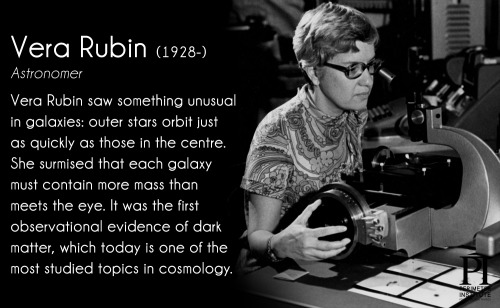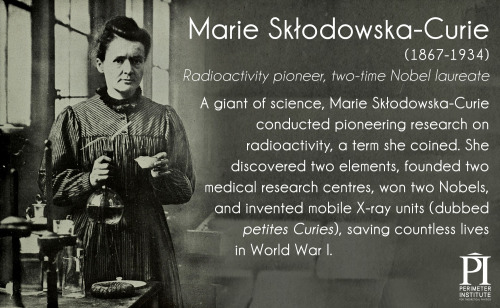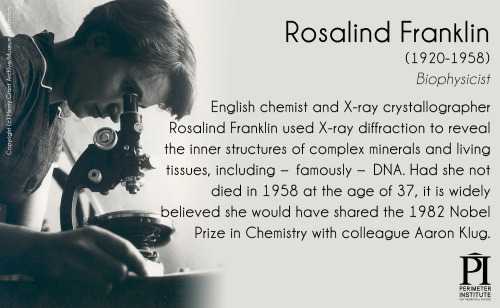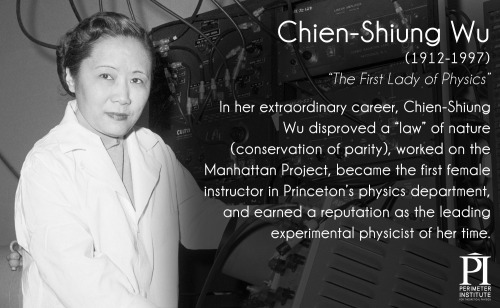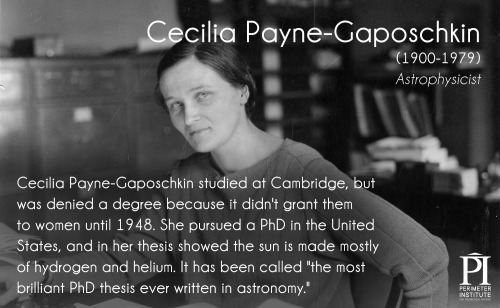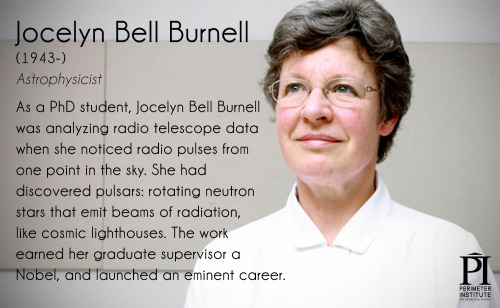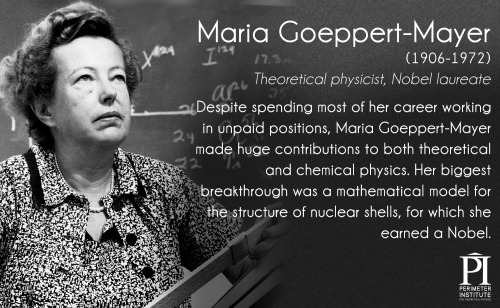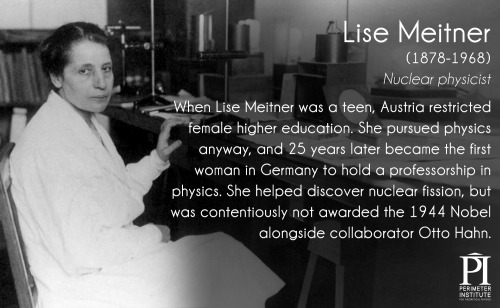What Have Eclipses Ever Done For Science? Quite A Lot, Actually!
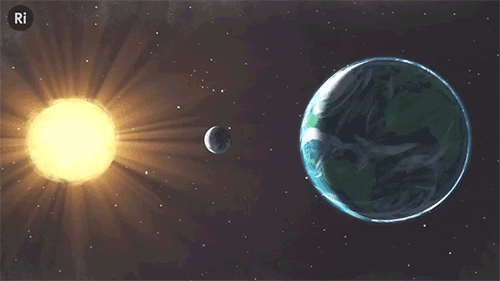
What have eclipses ever done for science? Quite a lot, actually!
The first measurement of the width of the Atlantic ocean in the 16th Century



When British settlers arrived in Virginia in the US, they weren’t sure how far across the globe they’d gone. They recorded the local time of a total eclipse of the moon - which is seen all across the night-time side of the planet. Their colleagues in London did the same, and when the travellers returned they could figure out the five hour time difference.
Edmond Halley discovered that the moon is moving away from the Earth


Halley realised you could back-calculate when previous eclipses would have occurred. But he noticed a mismatch between his predictions and the history books. The reason, he discovered, what that he was assuming the moon stayed the same distance from the Earth. It is actually getting further at about the rate your fingernails grow. And that means that one day (in a few million years, that is), the moon will be too far away to create any more total solar eclipses.
In 1919 a solar eclipse proved Einstein’s theory of relativity

Einstein’s theory predicted that the sun’s gravity should bend the light of nearby stars, meaning that in theory we should be able to see stars that are hidden just behind the sun. However, sunlight always blocks our view of these stars, and it was only during a solar eclipse that there was a short window to see if hidden stars were visible, as predicted. Astronomer Arthur Eddington travelled to West Africa and took photos that proved Einstein right.
Scientists still use solar eclipses today
It’s very hard to study the sun’s corona - a tenuous hot gas, which just one millionth of the light intensity of the sun. The shapes and lines of the corona show the nature of the sun’s magnetic field, and are only visible to study during an eclipse. NASA are also using this opportunity to help create the first thermal map of Mercury!
Want to know more? Watch our full video.
More Posts from T-sci-eng and Others
It’s a good Sunday. 🤗
To get the Sunday week summary delivered to your inbox subscribe here.
Experimental Saturday
Meet the ‘400k pie’

Banana whey protein bread

Interesting and fun stuff
Work vs Hobbies [Comic]
Use a Pencil to Freeze Sauce into Usable Portions
Bake the Perfect Pound Cake
Best Chocolate Chip Cookie Bake Off
Recipe lists
10 PUMPKIN SPICE FAVORITES
Ten Minute Meal Prep Recipes and Prep Ideas
10 DESSERTS AND COOKIES TO TRY FOR FALL
20 PUMPKIN RECIPES FOR FALL
25 APPLE RECIPES TO GET YOU READY FOR FALL
19 OF THE BEST EASY & HEALTHY ONE PAN MEALS
Our Favorite Pumpkin Recipes
Food days
Cheeseburger 🍔
Butterscotch Pudding
Rum Punch 🍹
Pecan Cookies
White Chocolate
Top recipes!
Classic Snickerdoodles

Fresh & Flavorful Strawberry Cake Recipe

Double Chocolate Brownies

RED VELVET SUGAR COOKIES RECIPE

BROWN SUGAR POUND CAKE

Ginger Fig Tart with Chestnut-Almond Crust {vegan & gluten-free}

RED VELVET MACARONS WITH CREAM CHEESE FROSTING

My Mom’s Homemade Spaghetti and Meat Sauce

APPLE FRITTER PANCAKES

Bacon Tomato and Spinach Spaghetti

PUMPKIN PIE SPICE PROTEIN SMOOTHIES

Apple Spice Ricotta Donuts

pumpkin gnocchi with sage butter sauce

Mashed Potato Fries

QUICK POTATO ROLLS
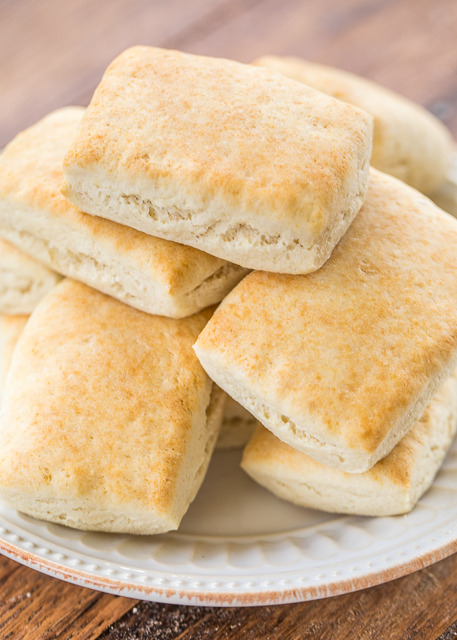
Follow for recipes
Get your FoodFfs stuff here






Okay, I’ve really missed talking about teratology.
These dogs have polydactyl, but what’s interesting is that the extra dew claws can move independently of one another and grip things. They’re only found on the hind feet giving the dogs a distinctly velociraptor look
The Beauceron is an ancient breed, and no one has a definitive answer of why they have these, but the prevailing theory is that they were bred to do a lot of rock climbing because they were used for herding and hunting over rocky mountainous terrain.
Other places to see my posts: INSTAGRAM / FACEBOOK / ETSY / KICKSTARTER




Concrete vs. Cement
Concrete and cement are (mostly) two different materials. Why mostly? Because concrete is made using cement. Though cement can (technically) be used on its own, concrete cannot be made without first making cement.
Classified as a ceramic, cement starts as a powder, a mixture of limestone and other minerals, which is heated and mixed with gypsum to form what we know of as cement. Still a powder in this form, once water is added and mixed the cement then hardens.
Portland cement, probably the most well known and commonly used cement, is classified as a hydraulic cement. This essentially means that once water has been added the chemical reaction, called hydration, that hardens the cement is not dependent on how much water is added. Hydraulic cements can harden underwater and remain strong even in wet conditions. As a side note, Portland cement is not a brand name, but a particular type of cement.
On the other hand, concrete is composed of cement, aggregate, and water, and is thus classified as a composite. Composites are defined as consisting of a matrix or binder that has a reinforcement within it. In the case of concrete, the cement water mixture is the matrix in which the reinforcement, or aggregate exists.
The aggregate is typically comprised of stones, rocks, and sand and its addition increases the durability of the concrete. The amount of the aggregate or the size of the aggregate added can also effect the water-to-cement ratio required to harden the material, strengthening the final product. The hardening process continues for years, meaning that concrete only gets stronger with age.
Though most concretes are lime-based, asphalt concrete uses asphalt as the cement material and polymer concretes also exist. Another common type of concrete is reinforced concrete, in which rebar, or reinforcing bars, are embedded within to add to the strength of the concrete.
Sources: ( 1 ) ( 2 ) ( 3 ) ( 4 ) ( 5 )
On Monday, the Onion reported that the “Nation’s math teachers introduce 27 new trig functions”. It’s a funny read. The gamsin, negtan, and cosvnx from the Onion article are fictional, but the piece has a kernel of truth: there are 10 secret trig functions you’ve never heard of, and they have delightful names like ‘haversine’ and ‘exsecant’.

Behold the awesomeness that is the heart of a blue whale. This colossal organ weighs 440 pounds and was retrieved from the carcass of a whale that had washed up on the shore of Newfoundland in 2014. Despite decomposition the heart was still in such great condition that it was a perfect candidate for preservation via plastination, which is precisely what was done by mammalogy technicians at the Royal Ontario Museum in Toronto.
Head over to Wired to learn how museum scientists went about preserving this titanic ticker.
[via Wired]
coolest physics thing that u know??
The coolest physics thing that I know keeps changing over time. But here is one that is extremely fascinating ( and also exaggerated for the effect ; but true! ):
Person living at the top of a skyscraper experiences time faster than one at the bottom
It is a known fact that the higher you are in the earth’s ** atmosphere, the lesser the effect of gravity is.
But the lesser the effect of gravity is, the faster the time ticks.

By how much you ask? Even if you live on the top floor of the Burj Khalifa your entire life, you would have aged more only by a few milliseconds than your friends at the bottom.
( Sure, doesn’t seem like much, but hell would break loose if we don’t consider this on the bigger scale of things )
This is known as Gravitational time dilation and is at the foundations of General Theory of Relativity. (More about this in an upcoming post)
Have a great day and thanks for asking!
EDIT: ** Lets just say hypothetically the earth is not spinning( just to ignore special relativistic effects) and we are looking at only the effects of height.

Due to the Mandela Effect, we remember things that didn’t happen or exist. Get the answer and why in our NEW VID: https://youtu.be/hvu4D1jngCY

This month on FYP!
It has been a blissful month in physics with the nobel prize for the work on gravitational waves and LIGO swiftly striking back with the detection of a neutron star merger.
At FYP! we have started to dwell a little bit into the essence of condensed matter physics while exploring some really cool science and engineering along the way.
Here’s what went down on FYP! this month:

Nobel prize in physics article on Gravitational waves
Gravitational waves, Light and Merging neutron stars

Paramagnets and Combinatorics
Diamagnetic levitation - Ig Nobel prize(2000)
Levitating frogs and superconductivity

Revisiting rolling shutter
Cooking with a computer (the importance of a heat sink on a computer)
Cartoon laws of physics
Beautiful proofs (#3) - Euler’s sum
Have a great day!
10 “Spinoffs of Tomorrow” You Can License for Your Business
The job of the our Technology Transfer Program is pretty straight-forward – bring NASA technology down to Earth. But, what does that actually mean? We’re glad you asked! We transfer the cool inventions NASA scientists develop for missions and license them to American businesses and entrepreneurs. And that is where the magic happens: those business-savvy licensees then create goods and products using our NASA tech. Once it hits the market, it becomes a “NASA Spinoff.”
If you’re imagining that sounds like a nightmare of paperwork and bureaucracy, think again. Our new automated “ATLAS” system helps you license your tech in no time — online and without any confusing forms or jargon.
So, sit back and browse this list of NASA tech ripe for the picking (well, licensing.) When you find something you like, follow the links below to apply for a license today! You can also browse the rest of our patent portfolio - full of hundreds of available technologies – by visiting technology.nasa.gov.

1. Soil Remediation with Plant-Fungal Combinations
Ahh, fungus. It’s fun to say and fun to eat—if you are a mushroom fan. But, did you know it can play a crucial role in helping trees grow in contaminated soil? Scientists at our Ames Research Center discovered that a special type of the fungus among us called “Ectomycorrhizal” (or EM for short) can help enhance the growth of trees in areas that have been damaged, such as those from oil spills.

2. Preliminary Research Aerodynamic Design to Lower Drag
When it comes to aircraft, drag can be, well…a drag. Luckily, innovators at our Armstrong Flight Research Center are experimenting with a new wing design that removes adverse yaw (or unwanted twisting) and dramatically increases aircraft efficiency by reducing drag. Known as the “Preliminary Research Aerodynamic Design to Lower Drag (PRANDTL-D)” wing, this design addresses integrated bending moments and lift to achieve drag reduction.

3. Advancements in Nanomaterials
What do aircraft, batteries, and furniture have in common? They can ALL be improved with our nanomaterials. Nanomaterials are very tiny materials that often have unique optical, electrical and mechanical properties. Innovators at NASA’s Glenn Research Center have developed a suite of materials and methods to optimize the performance of nanomaterials by making them tougher and easier to process. This useful stuff can also help electronics, fuel cells and textiles.
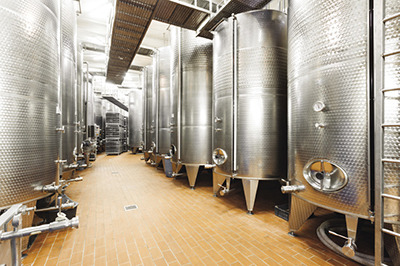
4. Green Precision Cleaning
Industrial cleaning is hard work. It can also be expensive when you have to bring in chemicals to get things squeaky. Enter “Green Precision Cleaning,” which uses the nitrogen bubbles in water instead. The bubbles act as a scrubbing agent to clean equipment. Goddard Space Flight Center scientists developed this system for cleaning tubing and piping that significantly reduces cost and carbon consumption. Deionized water (or water that has been treated to remove most of its mineral ions) takes the place of costlier isopropyl alcohol (IPA) and also leaves no waste, which cuts out the pricey process of disposal. The cleaning system quickly and precisely removes all foreign matter from tubing and piping.

5. Self-Contained Device to Isolate Biological Samples
When it comes to working in space, smaller is always better. Innovators at our Johnson Space Center have developed a self-contained device for isolating microscopic materials like DNA, RNA, proteins, and cells without using pipettes or centrifuges. Think of this technology like a small briefcase full of what you need to isolate genetic material from organisms and microorganisms for analysis away from the lab. The device is also leak-proof, so users are protected from chemical hazards—which is good news for astronauts and Earth-bound scientists alike.

6. Portable, Rapid, Quiet Drill
When it comes to “bringing the boom,” NASA does it better than anyone. But sometimes, we know it’s better to keep the decibels low. That’s why innovators at NASA’s Jet Propulsion Laboratory have developed a new handheld drilling device, suitable for a variety of operations, that is portable, rapid and quiet. Noise from drilling operations often becomes problematic because of the location or time of operations. Nighttime drilling can be particularly bothersome and the use of hearing protection in the high-noise areas may be difficult in some instances due to space restrictions or local hazards. This drill also weighs less than five pounds – talk about portable power.

7. Damage Detection System for Flat Surfaces
The ability to detect damage to surfaces can be crucial, especially on a sealed environment that sustains human life or critical equipment. Enter Kennedy Space Center’s damage detection system for flat composite surfaces. The system is made up of layered composite material, with some of those layers containing the detection system imbedded right in. Besides one day potentially keeping humans safe on Mars, this tech can also be used on aircrafts, military shelters, inflatable structures and more.

8. Sucrose-Treated Carbon Nanotube and Graphene Yarns and Sheets
We all know what a spoonful of sugar is capable of. But, who knew it could help make some materials stronger? Innovators at NASA’s Langley Research Center did! They use dehydrated sucrose to create yarns and woven sheets of carbon nanotubes and graphene.
The resulting materials are lightweight and strong. Sucrose is inexpensive and readily available, making the process cost-effective. Makes you look at the sweet substance a little differently, doesn’t it?

9. Ultrasonic Stir Welding
NASA scientists needed to find a way to friction weld that would be gentler on their welding equipment. Meet our next tech, ultrasonic stir welding.
NASA’s Marshall Space Flight Center engineers developed ultrasonic stir welding to join large pieces of very high-strength, high-melting-temperature metals such as titanium and Inconel. The addition of ultrasonic energy reduces damaging forces to the stir rod (or the piece of the unit that vibrates so fast, it joins the welding material together), extending its life. The technology also leaves behind a smoother, higher-quality weld.

10. A Field Deployable PiezoElectric Gravimeter (PEG)
It’s important to know that the fuel pumping into rockets has remained fully liquid or if a harmful chemical is leaking out of its container. But each of those things, and the many other places sensors are routinely used, tends to require a specially designed, one-use device.
That can result in time-consuming and costly cycles of design, test and build, since there is no real standardized sensor that can be adapted and used more widely.
To meet this need, the PiezoElectric Gravimeter (PEG) was developed to provide a sensing system and method that can serve as the foundation for a wide variety of sensing applications.

See anything your business could use? Did anything inspire you to start your own company? If so, head to our website at technology.nasa.gov to check them out.
When you’ve found what you need, click, “Apply Now!” Our licensing system, ATLAS, will guide you through the rest.
If the items on this round-up didn’t grab you, that’s ok, too. We have hundreds of other technologies available and ready to license on our website.
And if you want to learn more about the technologies already being used all around you, visit spinoff.nasa.gov.
Make sure to follow us on Tumblr for your regular dose of space: http://nasa.tumblr.com
-
 wings-scales-fire reblogged this · 5 months ago
wings-scales-fire reblogged this · 5 months ago -
 neuronium liked this · 2 years ago
neuronium liked this · 2 years ago -
 sharkeys-miscellaneous reblogged this · 5 years ago
sharkeys-miscellaneous reblogged this · 5 years ago -
 karyll-axolotl liked this · 5 years ago
karyll-axolotl liked this · 5 years ago -
 percbth liked this · 5 years ago
percbth liked this · 5 years ago -
 marlunaroja liked this · 5 years ago
marlunaroja liked this · 5 years ago -
 dharmatica reblogged this · 5 years ago
dharmatica reblogged this · 5 years ago -
 moonie139 reblogged this · 5 years ago
moonie139 reblogged this · 5 years ago -
 progettomorte liked this · 6 years ago
progettomorte liked this · 6 years ago -
 astraasper liked this · 6 years ago
astraasper liked this · 6 years ago -
 noeticlistener19 liked this · 6 years ago
noeticlistener19 liked this · 6 years ago -
 diamondsforlife liked this · 6 years ago
diamondsforlife liked this · 6 years ago -
 bansheenut reblogged this · 6 years ago
bansheenut reblogged this · 6 years ago -
 shadhavar1126 reblogged this · 6 years ago
shadhavar1126 reblogged this · 6 years ago -
 passionfrvttt liked this · 6 years ago
passionfrvttt liked this · 6 years ago -
 destrudovassago liked this · 6 years ago
destrudovassago liked this · 6 years ago -
 n2light432-blog reblogged this · 6 years ago
n2light432-blog reblogged this · 6 years ago -
 bitchimabroad-blog liked this · 6 years ago
bitchimabroad-blog liked this · 6 years ago -
 misentropy liked this · 6 years ago
misentropy liked this · 6 years ago -
 alt-89 reblogged this · 6 years ago
alt-89 reblogged this · 6 years ago -
 atomiclarka liked this · 6 years ago
atomiclarka liked this · 6 years ago -
 cara-linea reblogged this · 6 years ago
cara-linea reblogged this · 6 years ago -
 marbleowl reblogged this · 6 years ago
marbleowl reblogged this · 6 years ago -
 myparti reblogged this · 6 years ago
myparti reblogged this · 6 years ago -
 thestusci reblogged this · 6 years ago
thestusci reblogged this · 6 years ago -
 imtoohighbabe reblogged this · 6 years ago
imtoohighbabe reblogged this · 6 years ago -
 cnovakw liked this · 6 years ago
cnovakw liked this · 6 years ago -
 syntheticorange liked this · 7 years ago
syntheticorange liked this · 7 years ago -
 brokenmanx reblogged this · 7 years ago
brokenmanx reblogged this · 7 years ago -
 brokenmanx liked this · 7 years ago
brokenmanx liked this · 7 years ago -
 bearmythology liked this · 7 years ago
bearmythology liked this · 7 years ago -
 antonio-teixeira liked this · 7 years ago
antonio-teixeira liked this · 7 years ago -
 ullamars reblogged this · 7 years ago
ullamars reblogged this · 7 years ago -
 ullamars liked this · 7 years ago
ullamars liked this · 7 years ago -
 sharkey1964 liked this · 7 years ago
sharkey1964 liked this · 7 years ago -
 egl74722 reblogged this · 7 years ago
egl74722 reblogged this · 7 years ago -
 nikolaeftimov-blog liked this · 7 years ago
nikolaeftimov-blog liked this · 7 years ago

